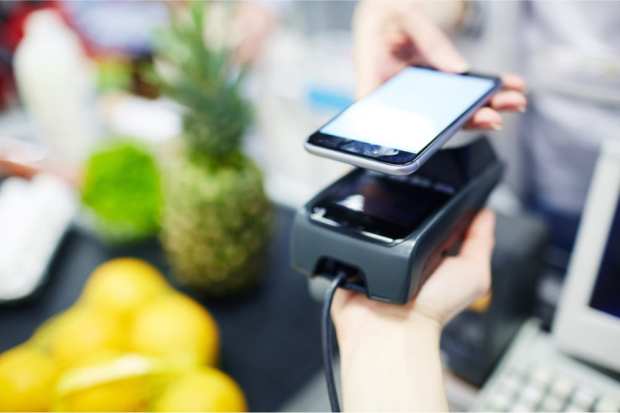Grocers Are Eating Up Connected Commerce

Digital grocery shopping has mushroomed due to the pandemic, and there’s a stickiness to the COVID-induced changes that cannot be swept away like a spill on aisle five.
Providing detailed intelligence and road-mapping for the immediate future, PYMNTS’ June Commerce Connected series done in collaboration with First Data, now Fiserv, notes how consumers have quickly acclimatized to digital/mobile grocery experiences.
“The use of online ordering platforms, home delivery services, mobile grocery ordering applications and subscription services has shot up since the pandemic’s onset,” the report states. “Fifty-one percent of shoppers responding to another survey made online grocery orders in late March and early April, and 33 percent noted it was the first time they had done so. Consumers have also turned their attention to mobile phones for home delivery, with aggregated shopping application Instacart reporting that downloads rose 218 percent from February 15 to March 15.” The Walmart and Target apps saw similar download surges.
That the shift is permanent is not in doubt. But questions remain around how companies must strengthen online ordering and delivery capabilities for the seamless flow consumers demand.
Ready Or Not …
When tens of millions of grocery shoppers rushed online in March — many of them newcomers to grocery eCommerce — not every chain and independent store operator was ready. Even those that have been diligently investing in digital were awed by the size and scope of the wave.
“Grocery stores — even those that have been working to shore up their online platforms for years — have needed to quickly adapt as the pandemic set in,” Commerce Connected states, “yet creating familiar experiences online or through mobile can be difficult because each process is fundamentally different from visiting brick-and-mortar locations.”
Central to conjoining all of this is payments choice, a key theme running throughout the June 2020 edition of Commerce Connected. Preference and need make powerful business stimuli.
“The industry has had to very strongly take into consideration how to handle scenarios [in which] you have … consumers who are on government aid — EBT, SNAP — and also consumers who are cash-centered [who] may not have access to credit cards [or] may not have access to checking accounts,” David Conroy, senior vice president and head of grocery solutions at Fiserv, told PYMNTS.
“How do we get those people [settled] in a digital environment very, very quickly? Those have been central challenges and themes for [Fiserv] and our clients over the last six weeks.”
Engaging With Contactless
Like many things, online grocery was making slow but steady progress until a “black swan” event helped it displace a lot of physical retailing in a little blink of time.
But life goes on, and brick-and-mortar grocery stores aren’t going anywhere.
The experience of grocery shopping in a live setting has changed, however — especially at the cash register and POS terminal that no one wants to touch. Contactless payments are proliferating, along with NFC beacons and other technologies driving in-store engagement.
“New payment technologies are costly to implement, meaning retailers must weigh such expenses against future revenues. The rush of users utilizing online and mobile has grocers reconsidering which tools they implement both in and out of their stores, especially if some can help minimize COVID-19 exposure. Many consumers will avoid touching PIN pads or terminals if they can tap their cards and use contactless payments instead,” Commerce Connected states.
